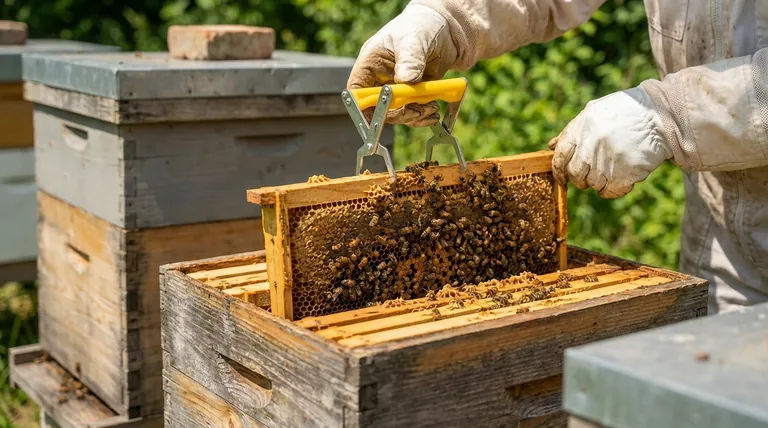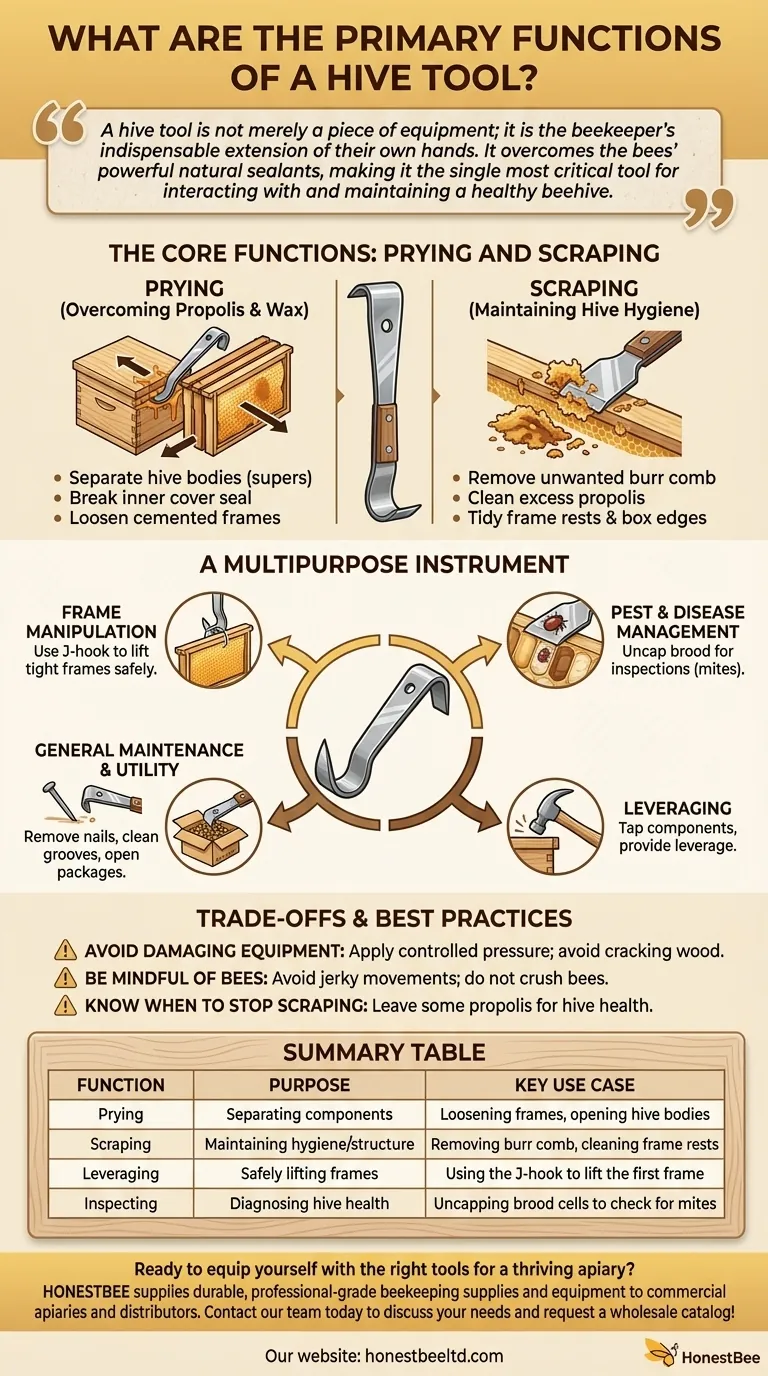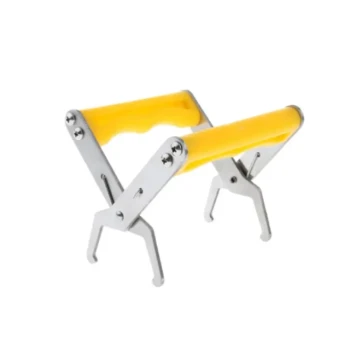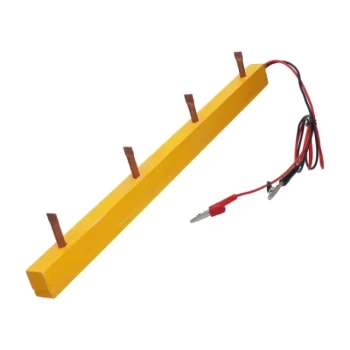At its core, a hive tool is designed for two primary functions: prying and scraping. Because bees use a sticky resin called propolis and beeswax to seal every crack and join every component within their hive, this simple steel bar is the essential key that allows a beekeeper to gain access, perform inspections, and manage the colony.
A hive tool is not merely a piece of equipment; it is the beekeeper's indispensable extension of their own hands. It overcomes the bees' powerful natural sealants, making it the single most critical tool for interacting with and maintaining a healthy beehive.

The Core Functions: Prying and Scraping
A beehive is not a set of loosely stacked boxes; it is a fortress glued together by its inhabitants. The hive tool is designed specifically to overcome this formidable defense system without causing unnecessary damage.
Overcoming Propolis and Wax (Prying)
Bees use propolis to seal gaps, providing structural integrity and protecting the hive from weather and invaders. This makes hive components incredibly difficult to separate.
The hive tool acts as a powerful lever. Its primary prying function is used to separate hive bodies (supers), break the seal on the inner cover, and gently loosen frames that are cemented in place with wax and propolis.
Maintaining Hive Hygiene (Scraping)
Bees will build comb and deposit propolis in any space they deem appropriate, which doesn't always align with the beekeeper's plans. This is often referred to as burr comb.
The sharp, beveled edge of the hive tool is perfect for scraping away this unwanted comb and excess propolis from frames, box edges, and the bottom board. This keeps the hive tidy, ensures frames fit properly, and allows for smooth inspections.
The Hive Tool as a Multipurpose Instrument
While prying and scraping are its main duties, the hive tool's robust design makes it a versatile instrument for a wide range of beekeeping tasks.
Frame Manipulation and Inspection
The curved or "J-hook" end of a standard hive tool is specifically designed to hook under the ear of a frame. This provides the leverage needed to lift the first, tightly packed frame out of the hive box without damaging the comb or crushing bees.
Pest and Disease Management
A hive tool is a crucial diagnostic instrument. Beekeepers use its sharp edge to uncap drone or worker brood cells to inspect for varroa mites, a significant parasite. It can also be used to crush pests like small hive beetles found during an inspection.
General Maintenance and Utility
The hive tool is the ultimate beekeeping multi-tool. It's used to remove nails and staples, clean foundation grooves in frames, open bee packages, and even scrape stingers off of skin without injecting more venom. Its solid steel construction means it can also be used as a makeshift hammer to tap components into place.
Understanding the Trade-offs and Best Practices
Using a hive tool effectively requires a balance of force and finesse. Understanding its limitations is key to being a good beekeeper.
Avoid Damaging Your Equipment
While it is a pry bar, applying force carelessly can crack or damage the wooden edges of your hive bodies and frames. Always seek a solid point of leverage and apply steady, controlled pressure.
Be Mindful of the Bees
Quick, jerky movements with a hive tool can startle and anger a colony. More importantly, it can crush bees caught between frames or boxes. Move deliberately and always check where you are placing the tool.
Know When to Stop Scraping
Propolis has natural antimicrobial properties that benefit the hive's immune system. While you must scrape it from frame rests and box edges to keep parts movable, there is no need to remove every last bit from the inside walls of the hive.
Making the Right Choice for Your Goal
Your use of the hive tool will evolve with your beekeeping experience.
- If you are a new beekeeper: Focus on mastering the basics of prying open the hive and loosening frames with minimal disturbance.
- If your primary focus is hive health: Learn to use the tool's edge to perform detailed inspections, such as uncapping brood cells to monitor for pests.
- If you are managing many hives: Embrace its role as a time-saving multi-tool for everything from quick repairs to efficiently moving through inspections.
Ultimately, the humble hive tool is the single most important piece of equipment you will own, enabling every action you take as a beekeeper.
Summary Table:
| Function | Purpose | Key Use Case |
|---|---|---|
| Prying | Separating hive components sealed with propolis | Loosening frames, opening hive bodies |
| Scraping | Maintaining hive hygiene and structure | Removing burr comb, cleaning frame rests |
| Leveraging | Safely lifting frames from the hive | Using the J-hook to lift the first frame |
| Inspecting | Diagnosing hive health and pests | Uncapping brood cells to check for mites |
Ready to equip yourself with the right tools for a thriving apiary? HONESTBEE supplies durable, professional-grade beekeeping supplies and equipment to commercial apiaries and distributors through our wholesale-focused operations. Let us help you build a more efficient and productive operation. Contact our team today to discuss your needs and request a wholesale catalog!
Visual Guide

Related Products
- Ergonomic High Visibility Plastic Frame Grip Handles
- Ergonomic Two Person Foldable Hive Lifter
- Wooden Bee Brush with Triple Row Artificial Fiber for Beekeeping
- Wooden Bee Brush with Double-Row Horsehair Bristles
- Professional Pneumatic Wire Embedder for Beehive Frames
People Also Ask
- What is the recommended method for pushing multiple frames back into place? Master the 2-4 Frame Technique for Bee Safety
- How is the standard hive tool used in beekeeping? Master Essential Hive Management
- What is a beekeeper tool? The Essential Hive Management Lever for Apiaries
- What should you do after completing the hive inspection? Secure Your Hive and Document for Success
- How should a hive tool be used for hive inspection? Master the Essential Beekeeper's Multi-Tool



















